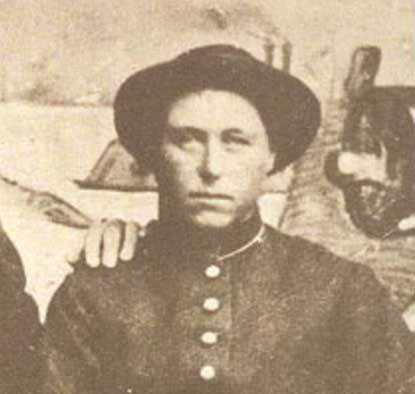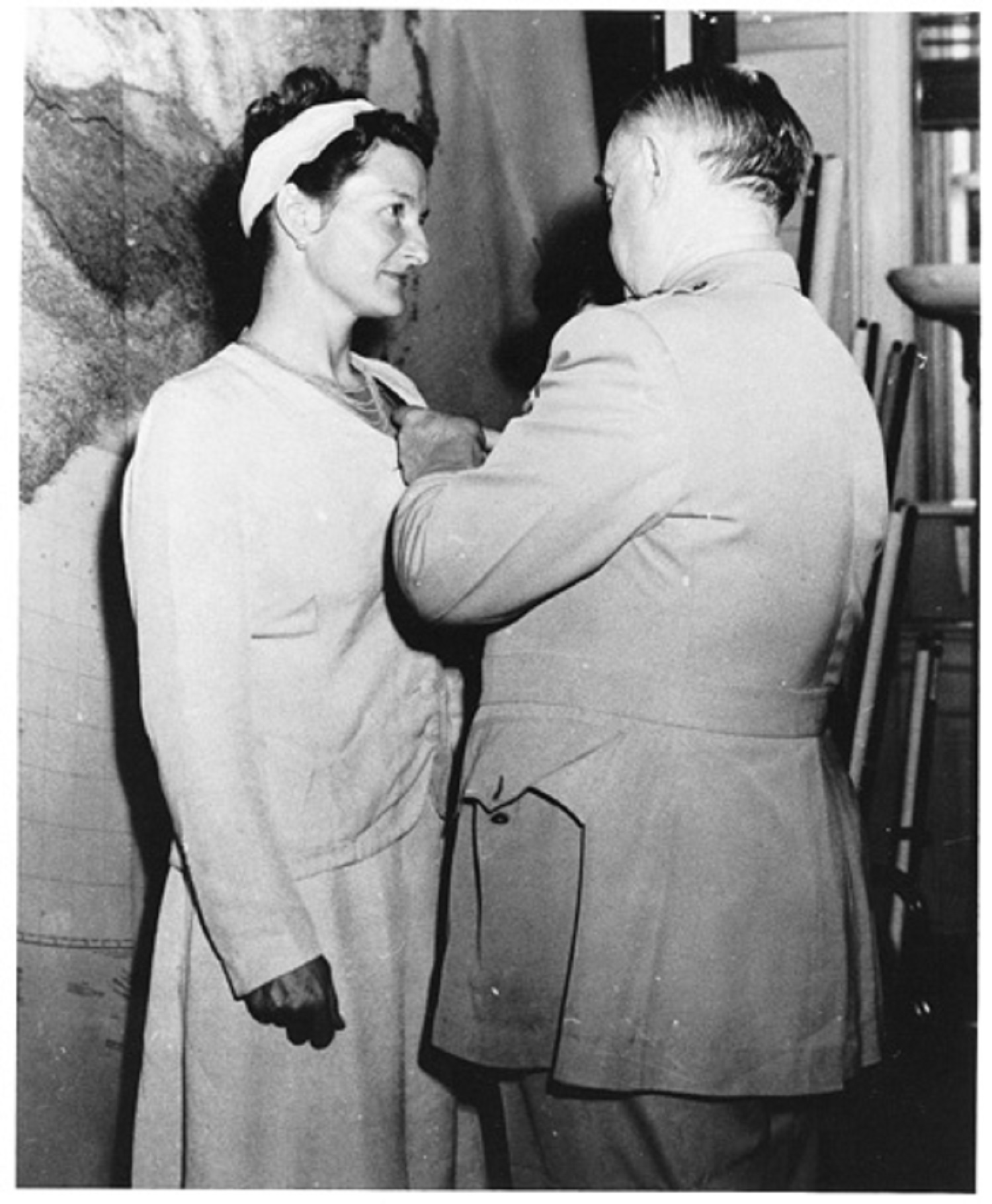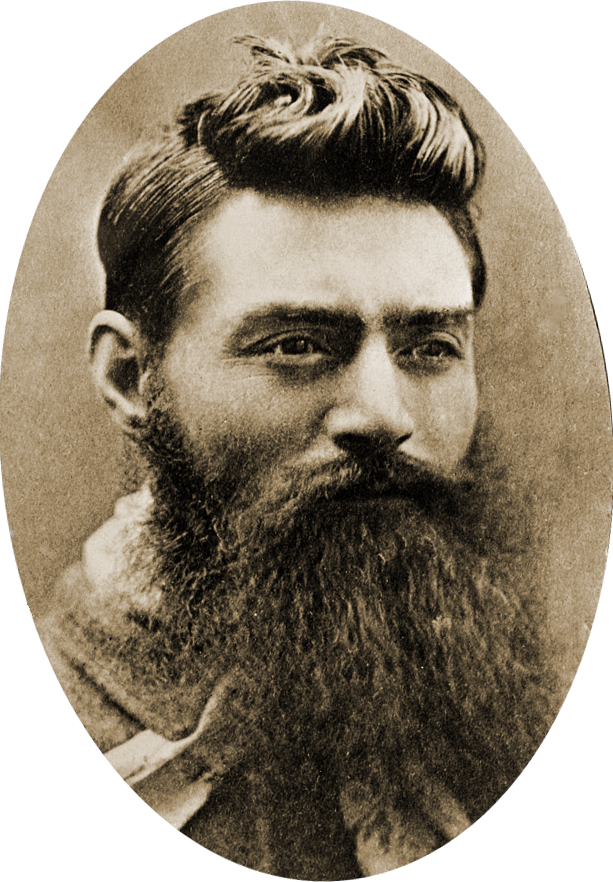Edward (Ned)Kelly is the most infamous outlaw in Australian history. He was the leader of a
four-man revolt against the colonial police in Victoria during the 1870's. Ned
had two reputations. On one side he was a hero that stood up for the rights of
his family and friends. On the other he was a horrible villain that would stop
at nothing to get what he wanted. Either way you look at it, Ned Kelly led a
very adventurous life. The question is whether it was a life he chose or was it
a life he was forced into.
Ned Kelly was
born in Victoria, Australia in 1855. He was the first-born son of John (Red)
Kelly and Ellen Kelly. Ned’s was a humble family, and his father was not
popular with law enforcement. Red had been in some trouble before he moved to
Australia from Ireland and he wasn’t having much luck in his new home either.
He passed away when Ned was only eleven, but it seems his unlawful lifestyle
rubbed off on his eldest son.
After Red
died, Ellen was left alone with eight children to feed and clothe. She moved
the family to Eleven Mile Creek. Not long after the move, Ned and some of the
other men in his family began getting themselves into trouble. Ned was arrested
several times before he was even fifteen, but the charges were always dropped.
Ned Kelly fans believe this was because the police were persecuting him for no
apparent reason other than that he was Irish. Eventually his luck ran out and
he was sentenced to six months in prison when he was fifteen.
Less than a
year after Ned was released, he was arrested for stealing a horse. He denied
stealing the horse and told the police that he was watching it for a friend.
The friend was likely the man who stole the horse. Ned fought with the
policeman who arrested him and allegedly embarrassed the man in the street.
This probably didn’t help his case much. He was sentenced to three years in
prison. He was only sixteen at the time.
Ned Kelly
returned home from prison when he was nineteen and led a quiet life for a short
time. Soon after, his mother remarried and Ned supposedly began stealing horses
with his stepfather. This is most likely true. Many members of the Kelly family
had been arrested for stealing horses by that time. It was not an uncommon
practice then. Money was tight and relations between common people and the
government were strained.
Nearly three
years after his release, Ned was accused of shooting a police officer. The
officer, whose name was Fitzpatrick, reported that he had been at Ellen Kelly’s
house and that Ned had shot him in the hand. The only other witnesses to his
accident were the Kellys. They told authorities that Ned Kelly was not even
home at the time. They also said that the man had been hurt in an altercation
had taken place because he was being inappropriate with Ned’s sister. Neither
story has been authenticated, but Fitzpatrick was later released from the force
for being untrustworthy in an unrelated incident.
Ned was forced
into hiding with his younger brother Dan, who was also implicated in the
supposed shooting. While in hiding, Ned and Dan were joined by their two good
friends, Joe Byrne and Steve Hart. The four stayed in hiding in the Australian
bush and were rather successful at evading authorities for some time. During
this time, Mrs. Kelly had been sentenced to three years in prison for her
involvement in the Fitzpatrick incident. This lent fuel to the fire that was
Ned’s hatred of the law.
It wasn’t
until a few months later that the men had their first run in with the police.
Four policemen had set up camp near Stringybark Creek while in search of Ned’s
gang. Unbeknownst to the police, Ned Kelly and his men were camped nearby and
were aware of their presence. When two of the policemen left to patrol the area
Ned Kelly’s gang ambushed the camp. One man was shot dead and the other
surrendered. The two men who were out patrolling then returned and refused to
surrender to Ned. When they opened fire on Ned and his gang, the gang returned
fire. Both men wound up dead. During the melee, the officer that had
surrendered managed to escape and alert officials.
In November of
1878, Ned and his gang were officially outlawed and a hefty reward was offered
for each of them, dead or alive. This did not deter the group in the slightest.
The very next month, they robbed the National Bank in Euroa. In February of
1879, Ned Kelly’s gang robbed the Bank of New South Wales. This time, they were
dressed as policemen. During the second robbery, Ned gave a letter to a man
that was meant to be delivered to the authorities. In it was his side of the
story. It later became known as the Jerilderie letter.
Following the
robberies, the reward offered for the members of the Ned Kelly gang increased.
The new reward was reportedly the highest reward ever offered for a criminal in
Australia at the time. The new reward was so high in fact that one of Joe
Byrnes’ childhood friends made a deal with the police for the reward. Joe heard
of his treachery and shot him down at his front door while four policemen
cowered inside the man’s house.
Immediately
after the killing, Ned Kelly and his gang removed to a hotel in Glenrowan. They
kept around sixty hostages inside. The gang had heard of a train filled with
lawmen that was on its way to Glenrowan. They had seen to it that a length of
track was dug up so that the train would derail. The plan was to wait it out at
the hotel, but Ned had made a fatal mistake. He had allowed a schoolteacher, by
the name of Thomas Curnow, leave the hotel with his family. The man immediately
signaled the train and all was lost. The police arrived at the hotel that
evening and surrounded it.
The Ned Kelly
gang was as prepared for such an attack as they could be. They had constructed
heavy bulletproof armor and each man had his own set with some variations. This
was rather ingenious work at the time and the police were stumped by it. The
men went out into the night wearing these suits, but they were very heavy and
left their legs and arms exposed. Both Ned and Steve were shot, but neither was
seriously injured.
Dan Kelly, Joe
Byrne and Steve Hart retreated into the hotel while Ned Kelly went off into the
bush, undetected by the police. The police continued to shoot into the hotel
throughout the night. Nonetheless, many hostages were able to escape. Two
hostages were shot and killed by the police and Joe Byrne was supposedly shot
and killed while standing at the bar having a drink.
Early in the
morning, Ned came out of the bush, still wearing his formidable armor. The
police were only able to take him down by shooting him in the legs. Early that
afternoon the police set fire to the hotel. When they went into the hotel
later, they found Dan and Steve dead inside. Reports vary greatly as to the
cause of these young men’s deaths. Some say they poisoned themselves while the
hotel burned. There is no way to be sure what really happened, as there was no
official investigation.
Ned Kelly
survived the battle and was subsequently put on trial. He was tried for the
murder of Thomas Lonigan at Stringybark Creek and found guilty. His was
sentenced to hang. This sentence was carried out on November 11, 1880. Ned
Kelly was only 25 years old when he died. He may have been a criminal or he may
have been a victim. Either way, he remains a heroic symbol of hope against
tyranny to many Australians to this day.
Sources
Kelly, Edward
(Ned) (1855-1880), retrieved 7/11/09,
adb.online.edu.au/biogs/A050009b.htm?hilite=ned;kelly




